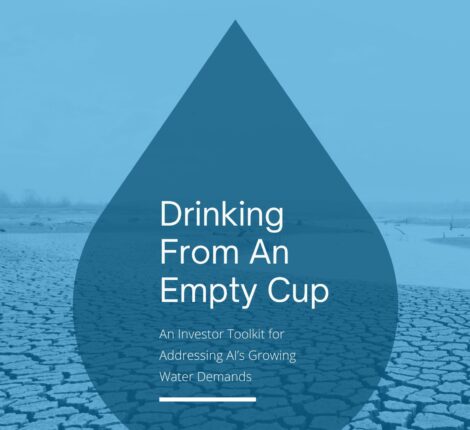Looking Ahead — Our CEO’s 3Q 2021 Letter to Clients
Looking Ahead
Eighteen months into this pandemic and we have all had enough. Stock market volatility at the end of September was the icing on the cake for those of us on the Investment Committee. Soaring oil prices, the unresolved debt ceiling, fear of inflation, the reconciliation bill, the Build Back Better Act, and pending tax law changes all served to create enough uncertainty among investors to drive the market back to a whipsawing behavior that trimmed the appreciation we had gained over the summer and ended the quarter flat. It was an annoying finish to our sixth quarter of the pandemic.
As talk of inflation and lack of congressional activity began to rise this quarter, we were drawn back into the news cycle, trying to separate fear from fact in an effort to come up with a clear picture of what was behind us and what lay ahead. Since COVID emerged, these two perspectives have become blurred. News bites continued to stoke fear with talking heads commenting incessantly on the insurrection, Trump’s latest attention-grabbing behavior, and states battling about COVID-19 mandates. Enough! The draconian abortion restrictions in Texas have been the most jarring to our staff, but, honestly, weaving this level of misogyny into an analysis of upcoming market behavior is nothing new to us. Other than saying: we think the whipsaw factor will continue, and we expect more uncertainty. Things (and markets) are not going to settle down just because good ‘ol Joe is at the helm.
When stepping back to a more contemplative perspective, it does seem clear to me that our day-to-day existence and our perceptions of the world have gone from being wildly external (and expansive) to wildly internal (and expansive). The question now is how we incorporate what we loved or was important about our external world into a new, possibly post-COVID reality, knowing that this pandemic will not be our last. As we end this year and plan for the next, we are acutely aware of these three factors: 1) an expanding digital world; 2) an evolution in consumerism; and 3) (perhaps obviously) the importance of healthcare. Each area intersects multiple industries, and all are at top of mind for us as we move into 2022.
The digital world: Our dependence on virtual conversations and work environments had escalated and will continue to do so. A phone call to a family member pales in comparison to seeing the faces of grandchildren or parents. Here at NorthStar, Zoom has allowed us to see many more of you (albeit virtually) than we did pre-COVID. Technology to improve supply bottlenecks, seamless remote working environments, and buying and selling our wares online are all possible because of and dependent on access to “the cloud.” And the cloud is dependent on massive operating systems and storage that are in turn dependent on uninterrupted supplies of power, solid security, and geographically diversified homes for the equipment. Climate-based outages, floods, wind, fluctuating temperatures are all threats to our digital lives, and the mitigation of these risks is a vital component of our ability to function in the future.
New consumerism: COVID has also forced many of us to concentrate our activities in our own homes, and with that comes the creation of pods of friends and family, meals at home, and learning what it means to stay in one place (both good and bad). We are finding creative new ways to access goods, including basic necessities and luxuries, from our sofas. Bottlenecks at the ports (widely reported in the last month) highlight international supply chain disruptions, and delivery delays remind us of how we have come to rely upon on-demand services. We could see a re-emergence of retail “bricks and mortar” or manufacturing locating closer to points of sale. Big box retail has done quite well during this time, while Mom and Pop retail (where we used to purchase thoughtful gifts or last-minute items) has been choked out, and unique, often local, items and the methods for paying for them have appeared on our laptops, phones, and other devices. The need for more stuff (clothing in particular) has diminished, with local shops in formerly thriving main street communities being replaced with thrift shops willing to consign our old sweaters, and selling them on the internet is also a popular option. Personally, I’m hoping this leads to more local swaps, bartering, and exchanges with a diminished need for the unnecessary or brand new. We don’t know for certain, but our bet is that consumerism has fundamentally changed.
Healthcare: Pharmaceuticals that address pandemics, super bugs, and biohazards are certainly necessary, but their business models are fraught with tremendous outlays of money and time, with high risks and costs that are frequently borne by those who can least afford it. We believe that innovations in joint replacements, dental implants, eyeglasses, and hearing devices, along with technology that replaces crumbling human infrastructure, could remain a primary area for growth.
We care about how these trends interface with our concerns about race and gender, human rights, environmental justice, corporate governance, and economic inequality. We will continue to scrutinize the trends we see developing and think deeply about opportunities to address the social and environmental challenges that exist now and those that emerge as these trends continue. Our goal is, of course, to think ahead and to incorporate our observations of necessary and monumental change into our research as we select equities and fixed income, create targeted shareholder resolutions, and research Outside Investments.
Economic Update
We believe prospects for economic growth over the next year remain positive, though the recovery has hit a few formidable speed bumps. During the quarter, the delta variant led to a new wave of infections and hospitalizations, and, as a result, consumers held back on going out to eat, flying, shopping, and engaging in other forms of entertainment. Job growth slowed and, at the same time, Americans quit their jobs and left the workforce at a historic rate. Workers at all skill levels and across all industries quit, though hospitality and food services workers left the workforce at a higher rate. This exodus, known at the Great Resignation (or The Great Rebellion by some), has caught many employers off guard as they are trying to woo employees back to the office. According to the U.S. Bureau of Labor, 4.3 million people quit their jobs in August, 242,000 more than in July, and there are about 1 million more jobs than workers.[1] What is happening? It’s too early to know for certain, but there are a lot of anecdotal and survey data that suggest we are witnessing a once-in-a-generation “take this job and shove it” moment.[2]
Simultaneously, businesses and consumers are also feeling the impact of widespread congestion along several nodes in the global supply chain, which has resulted in higher prices and product shortages for items ranging from construction materials to diapers. President Biden recently announced that the Port of Los Angeles will operate 24/7 in an effort to relieve growing backlogs of goods. However, this may not be enough given that blockages appear throughout the global network in railyards, warehouses, and harbors in foreign countries.
Despite the continuation of the pandemic, it appears that we have a healthy economy with high demand for goods and services, plentiful jobs, and rising wages. After the Great Recession of 2008, the demand for goods and services was weak for some time as households paid down debts and companies were hesitant to invest. This time, fiscal stimulus payments made directly to consumers and other measures like eviction moratoriums, extended unemployment benefits, and forbearance programs were highly effective in shielding consumers from the economic impact of COVID-19. According to a report by McKinsey and Co, higher-income and younger consumers saw spending growth of 11 percent and 15 percent year-over-year relative to pre-COVID-19 respectively, while lower-income and older consumers spent less on a year-over-year basis relative to pre-COVID 19 levels.[3]
We cannot forget that lower-income consumers are still drowning financially, even though the average consumer is in better financial shape following the latest economic downturn caused by the pandemic. A recent study conducted by Harvard University’s School of Public Health indicated that more than 50% of Black, Native American, and Latino households reported having serious financial problems, compared with 29% of white households. In addition, close to 60% of households earning less than $50,000 per year reported having serious financial problems, compared with 18% of households earning more than $50,000.[4] Economic inequality and issues of race, class, and gender continue to be defining characteristics of our society, which is unacceptable if we honestly believe that everyone should have equal access to opportunities.
As we move into the latter part of this year and next year, the health of the consumer, and therefore our economy, will depend on whether the Democrats are able to pass the Build Back Better Act (BBBA) budget reconciliation bill, which is one of two huge pieces of legislation that form the centerpiece of President Biden’s domestic agenda. This legislation, if passed, could be the most ambitious and transformative domestic policy agenda since the Great Society of the 1960s or the New Deal of the 1930s and includes a long list of social policies and programs that will support lower- and middle-income households.
For example, the BBBA would extend the child tax credit through 2025. Under President Biden’s American Rescue Plan, which went into effect in March 2021, the child tax credit was raised to $3,000 from $2,000 and was made fully refundable with half being delivered to people’s bank accounts in monthly payments from June to December of this year. Unfortunately, Republicans are unified in their opposition and do not support the social programs (universal pre-K, free community college, childcare support, expanded Medicaid and Medicare services, paid family leave, lower prescription drug cost, housing investments, tax incentives for electronic vehicles, and other climate change initiatives) that are included in the budget reconciliation bill.
We expect market volatility to continue over the next couple of months as tensions remain high in Congress. Republicans are unified in their opposition of the human or soft infrastructure bill that would fund mostly social programs, while they support the other piece of legislation known as the hard infrastructure bill that is focused on fixing and shoring up roads and bridges. In an effort to support the hard infrastructure bill while undermining the soft infrastructure bill, it appears that Republicans will use the need to raise the debt ceiling (the total amount of money that the United States government is authorized to borrow to meet its existing legal obligations) and the need to fund the government as leverage in an attempt to thwart the Democrats’ plans to enact both the soft and the hard infrastructure bills.
The need to increase the debt ceiling and fund the government for the next year, also known as the continuing resolution, must be finalized in early December. With the fate of Biden’s legislative agenda intertwined with two other crucial pieces of legislation (the debt ceiling and the continuing resolution) needed to keep our economy on steady footing, we expect a very contentious holiday season for Congress and the stock market. The happenings in Congress, the ongoing challenge of managing the coronavirus during the winter months, and corporations’ strong desires to stock their shelves for the holiday shopping season foretell an anxiety-ridden end to the year.
Equities
The September Effect was in full swing as we ended the quarter. The September Effect refers to a seasonal pattern in the stock market when prices dip. Markets yo-yoed in the days leading up to the close on September 30th rather than continuing the steady rise seen during the warm summer months. This effect is usually driven by investor behavior because of preparations for the upcoming year (tax loss harvesting, capturing gains when there is uncertainty). It’s tempting to assume that the end of CARES Act funding and expiration of the eviction moratorium created this uncertainty, but, as we all know by now, the “market” only becomes aware of the financial concerns of the low- and middle-class worker when it impacts corporate profit.
The headline that exacerbated these swings was the reporting on Congressional actions scheduled to be resolved before a September 30th deadline. As the deadline drew closer, the market swung harder, hoping for some sort of resolve. The alternating down and up days in the market had nothing to do with fundamental changes in the companies that make up the market. Companies showed signs of steady growth and recovery in the third quarter, yet the S&P 500 ended down 4.8 percent in September, the sharpest monthly decline since March 2020.
Outside Investments[5]
“Why don’t we recommend venture capital (VC) funds to our clients?” This has been a topic of conversation lately during the Outside Investments portion of NorthStar’s Investment Committee meetings. We thought you might also be interested in our response to the question.
Through Outside Investments we have an opportunity (and, we believe, an obligation) to seek investments and hybrid investment/philanthropy projects that recognize and address the growing wealth gap and its rippling effects on the lives of so many people. Our goal is to find investments that are structured to prioritize the needs of those who have been marginalized rather than the requirements that are imposed by wealthy investors.
Venture capital funds seek early-stage companies that have the potential to grow exponentially within a time-constrained period. They tend to invest in a diverse portfolio of companies (often with on overarching theme, such as financial technology (fintech) or climate solutions technology). While this sounds innocuous enough, we believe that this system is built to prioritize the investor above all else. For example, a standard VC fund will remain invested in a company for about 10 years and then seek to exit – because this is what works for investors. Founders and employees may leap at the opportunity to get venture funding but then struggle with the compromises they have to make and the urgency with which they need to grow their businesses. What about the effect this has on the company and their long-term planning? How does this impact the treatment of employees?
Another facet of VC funds is that they tend to own a meaningful percentage of the company – and thus exert significant influence – due to their investment at an early stage when the company has a low valuation. We question why investors of early-stage businesses should be entitled to such a large portion of the company’s financial success and the role they should play in dictating how the company operates. For our work in Outside Investments, our goal is to support local autonomy and ownership – the VC model leaves little room for this.
While we answer “no” to the question of whether we should recommend investments in VC funds, we do recognize the capital needs that early-stage companies have and, in some instances, may recommend investments in companies that have embedded values and commitments (such as public benefit corporations and cooperatives). We are careful to ensure that the investment structure and approach supports rather than impedes what is required by the company and its employees, customers, suppliers, environment, and communities.
We’d love to hear your thoughts on this or answer any questions you might have.
If you are interested in participating in these or any other Outside Investments, please let us know and we can discuss what would be most appropriate given your financial situation.
Shareholder Activism Update
Fall 2021 Review
While most shareholder proposals go to a vote of shareholders in the spring, a few are “off-cycle” and will be voted on at company annual meetings in the fall. This year, NorthStar filed three proposals at companies that fall into this category: FedEx, ADP, and Microsoft. The FedEx meeting took place in late September. NorthStar had engaged FedEx on systemic racism, encouraging the company to engage in a robust evaluation of corporate culture to identify, among other concerns, why a company with a majority-diverse workforce would have so few employees of color as top-tier managers and zero Black or Latinx as Executive Officers. You may remember that similar proposals garnered 11% of the vote last spring – the first opportunities for shareholders to read the proposal. We’re thrilled to report that support for this proposal rose to 18.5%. (See our full press release here.)
Our proposal at ADP on employee representation on the board of directors will go to a vote of shareholders on November 10th and our proposal at Microsoft on second chance employment (which we’ll discuss below) will be voted on by early December. We’ll report back next quarter with our Social Change and Activism Annual Report to summarize the full year’s work.
2022 Activism Plans
The fall is also the time that shareholder activists make firm plans for the next year. Most shareholder proposals are due to the companies by middle of November to late December. For 2022, we have decided to re-file all of our existing engagements on board diversity, systemic racism, prison labor, and unequal shareholder voting (a governance issue that affects all other shareholder activism issues). In addition to these proposal filings, we are going to dedicate much of 2022 to several research and strategy projects that are summarized below:
Second Chance Employment
At least 600,000 people are released from U.S. prisons each year and need to find employment to reintegrate into society and support themselves and their families. However, the unemployment rate for people with criminal records is 27%, and the existence of a criminal record reduces job callbacks by 65% for Black men[6] – compounding existing discrimination against people of color and exponentially increasing the barriers to success. As a natural outgrowth to our work on racial equity, prison labor, and economic justice, NorthStar filed an initial shareholder proposal at Microsoft this past spring, and we wrote letters to nearly 100 companies to learn about their second chance employment practices. As we’ve learned more about how little companies are doing in this space, we have decided to research this topic more in depth to prepare for wider engagements on the issue. We believe that, through focused recruitment, career pathways, and training, our portfolio companies could make a meaningful impact on this issue.
Prison Labor
NorthStar continues its long-term research on prison labor. Our 2018 paper on this topic has been referenced by industry colleagues, academic scholars, and corporate staff as an enlightening and eye-opening look into the opacity of prison labor in the U.S. supply chain. Nonetheless, more work remains. For 2022, NorthStar will work on the next phase of this investigation which will involve more original research and data mining in an attempt to break through the opaque shield around supply chain issues to better understand any possible exposure in our portfolio companies’ supply chains.
Improving Our “Get Out the Vote” Strategies
Institutional investors (large banks, pension funds, mutual funds, etc.) often control 70% or more of the vote at companies where we file our shareholder proposals. We find it much more difficult to garner a “yes” vote on our proposals from institutional investors (who vote on behalf of underlying clients or shareholders) compared to retail shareholders (who own shares outright and vote on their own behalf). With the continual rise of institutional investor ownership, NorthStar plans to develop an annual plan for engagement with these large investors. Much of this work will be educational – sharing our perspective, answering questions, pushing them to consider new ideas – as well as fine-tuning our arguments, developing relationships with staff at these firms, and strategizing with colleagues working on similar goals. This has been a project we’ve been eager to develop for several years and which should set the stage for successful engagements for decades to come.
SEC Rulemaking Update
A year ago, the Securities and Exchange Commission (SEC), with a conservative majority, passed revisions to the rule that governs the way asset owners – you, our clients, as well as NorthStar itself – can file shareholder proposals. This change was a poorly masked attempt to dampen the years-long rise in support for shareholder proposals. As the major issues of our time become palpable, we have begun to see a broader understanding that issues brought forward by shareholders on environmental, social, and governance issues are not merely fringe concerns but are likely to have financial implications in the short- and long-term.
Since this rule change was announced, NorthStar has worked with colleagues to determine ways to protect our shareholder rights including supporting three of our colleagues – a coalition of faith-based investors, an individual shareholder filer, and a nonprofit dedicated to shareholder advocacy – as they filed a lawsuit that seeks to vacate these SEC rule changes. We are hopeful that this lawsuit will be successful in overturning the changes of last year that would have severely restricted NorthStar’s ability to resubmit proposals. While we’re hoping that our colleagues will see a resolution to the lawsuit by next spring, it may affect our shareholder proposal filings for 2022. The proposal filing season may start with uncertainty but will hopefully end with more definitive answers on the future of engagement.
Sincerely,

Julie N.W. Goodridge
The forecasts, opinions, and estimates expressed in this report constitute our judgment as of the date of this letter and are subject to change without notice based on market, economic, and other conditions. The assumptions underlying these forecasts concern future events over which we have no control, and may turn out to be materially different from actual experience. All data contained in this letter is from sources deemed to be reliable, but cannot be guaranteed as to accuracy or completeness. All investments are subject to risk, including loss of principal. Past performance is no guarantee of future results. It is not possible to invest directly in an index.
FOR INFORMATION PURPOSES ONLY
This information includes a discussion of a number of companies and other financial market and social events. These opinions are current as of the date of this publication but are subject to change. The information provided herein does not provide information reasonably sufficient upon which to base an investment decision and should not be considered a recommendation to purchase or sell any particular security.
Footnotes:
[1] A record 4.3 million workers quit their jobs in August, led by food and retail industries (cnbc.com)
[2] Harvard economist sheds light on ‘Great Resignation’ – Harvard Gazette
[3] Consumer sentiment in the US during the coronavirus crisis | McKinsey
[4] Poll: Financial distress worsens for Americans during delta surge : Shots – Health News : NPR
[5] Outside Investments are privately placed with various types of entities, as described above. In addition to the risks of equity, (which include, but are not limited to, changes in revenue, margins, earnings, dividends, cash flow, balance sheet, leverage, liquidity, solvency, legal matters, negative publicity, brand image, and general market volatility) and the risks of fixed income investing (such as credit risk, interest rate changes and the yield curve, inflation, default, monetary policy changes, government instability, and other risks), Outside Investments are typically illiquid.
[6] https://www.uschamber.com/assets/archived/images/uscc_business_case_for_cj-second_chance_hiring_report_aug2021.pdf
The forecasts, opinions, and estimates expressed in this letter constitute NorthStar’s judgement as of the date this letter was originally sent and are subject to change without notice based on market, economic, and other conditions. The assumptions underlying these opinions and forecasts concern future events over which NorthStar has no control, and may turn out to be materially different from actual experience. All data contained in this letter is from sources deemed to be reliable, but cannot be guaranteed as to accuracy or completeness. All investments are subject to risk, including loss of principal. Past performance is no guarantee of future results. It is not possible to invest directly in an index.




